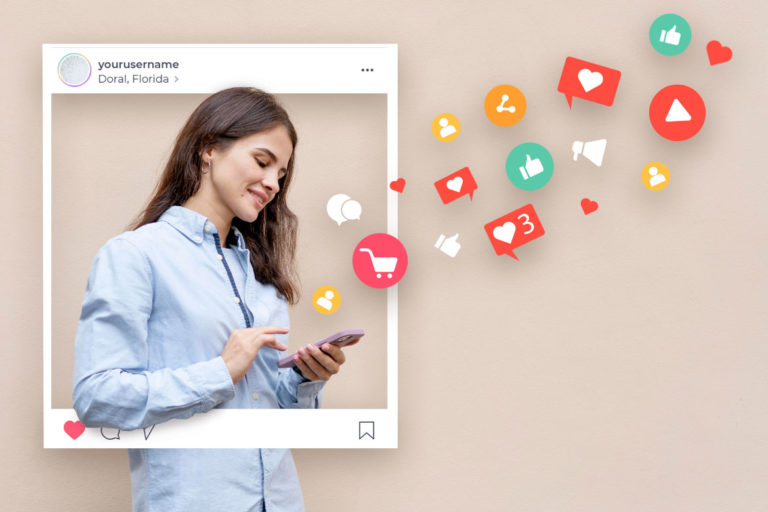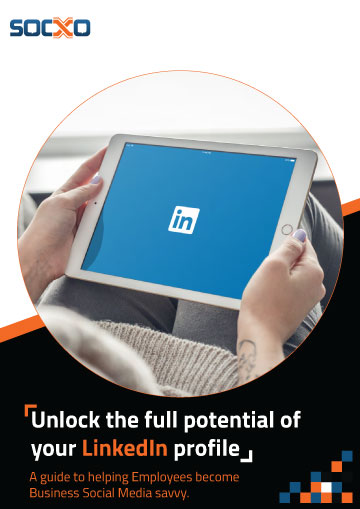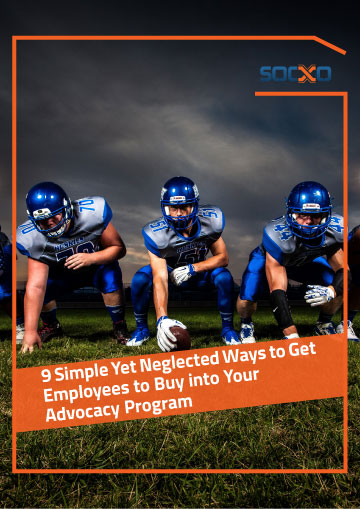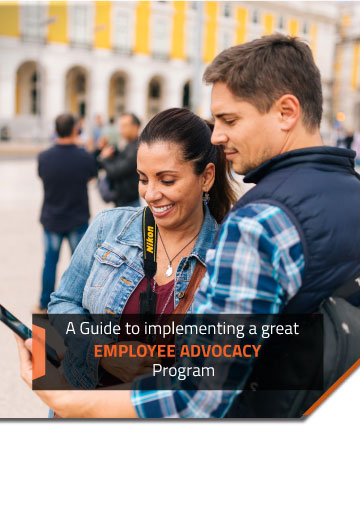
“Not using social media in the workplace is starting to make about as much sense as not using the phone or email.” – Ryan Holmes
Social media has broken through as an important, even indispensable, part of the 2021 workplace. Why is this the case? What do statistics say? Should we allow this phenomenon to continue unchecked? And why should you even care? Here’s all you need to know about how employees use Social Media in the Workplace.
A Tweet by someone named Gary, who worked at an Amazon Fulfillment Centre, said, “My FC lets me take two 20-minute breaks and one 30-minute lunch. On overtime days, we get three 20min breaks, which is also pretty nice as well. Before the pandemic, our breaks used to be only 15 min. The overall 10 min increase is. Being an essential worker is dignifying for me.”
Among his followers on Twitter would be a co-worker, who would read this Tweet and feel happy about the organization they are working in. Another follower could be someone from a different company, who may feel bad for not having these perks or share better perks that they may have, leading to Gary feeling dissatisfied. That’s the impact of workplace social media. This takes us to research by Lorenzo Bizzi.
An exciting survey published in the Harvard Business Review by Bizzi gives us some key insights into workplace social media. It reveals that when employees interacted with their co-workers on social media, their engagement at the workplace increased. But when they interacted with people other than their co-workers, they were less motivated and showed less initiative. Many employees are consequently (and understandably) worried about workplace social media being a productivity killer.
But is workplace social media a productivity killer? Let’s find out in this article.

Easy Index
- The Current Picture
- Why Do Employees Use Social Media in the Workplace?
- What Do the Numbers Say?
- Social Media & Mental Health
- The Upsides & Downsides of Social Media Use At the Workplace
- How Can Social Media Be Used In The Workplace To Promote A Positive Culture?
- Some Great Examples of Workplace Social Media Use
The Current Picture
You already must have guessed what the current scenario is like, with social media being a buzzword with almost everyone around the globe. As most of the world works remotely, with WFH becoming the norm due to the COVID-19 pandemic, there isn’t any efficient method of regulating workplace social media use. It is predicted that 16% of the workforce will continue to work remotely even after the pandemic.
77% of the employees use social media at the workplace.
This is regardless of whether their employer has a workplace social media policy in place or not. This means workplace social media is a major driving factor in how your employees feel. A social media policy might not go a long way in changing this. However, an employee is human and social media is how connections are forged: something most human beings crave.
Letting your employees use social media at their discretion might be a good thing, but if it goes out of control, it could cause trouble. So, let’s first try and understand the ‘Why’ behind workplace social media use.
Why Do Employees Use Social Media at the Workplace?
According to research conducted by Pew Research Centre, here are the primary reasons why employees use social media at the workplace. While this is old research, most of it still holds very much true even now, and more so, because of the pandemic and WFH.
1. For a Break
34% of the people who were a part of the research said they used workplace social media to get a mental break from work. This means for many, it is a virtual escape from work stress and a way to rejuvenate their minds quickly.
2. To Connect With Family
The participants also used workplace social media to connect with their friends or family while they were at work. This could be by liking or commenting on their pictures, sharing videos or others’ posts in personal messages, or just having a quick chat.
3. To Post About Work
About 50% of the employees use workplace social media to post about their employers, out of which 39% have positive comments.
4. Make or Support Professional Connections
To climb the ladder up to your chosen market, good professional connections are a must. The survey revealed that employees used workplace social media to connect with people on platforms like LinkedIn.
5. Get Information to Solve Problems At Work
20% of the participants used workplace social media for problem-solving. It could be to look for an answer on a blog on social media platforms, connect with the right team to troubleshoot an issue at work, etc.
6. Build or Strengthen Personal Relationships With Coworkers
Having better relationships with co-workers makes life easy. About 17% of the participants said they used workplace social media to bond with their coworkers.
7. Learn About Someone They Work With
Social media is like a window into someone’s life. For example, say a new person has joined the team and wants to know more about them. Of course, one way is to strike a conversation, but about 17% of the participants reported to workplace social media.
8. Ask Work-Related Questions of People Outside Their Organisation
12% of the participants would ask others from similar or different industries about their work and use workplace social media. This is an attempt to upskill and grow by gaining information and knowledge.
9. Ask Work-Related Questions of People Inside Their Organisation
Another 12% of the participants would use social media to ask people who were not a part of their organization to ask questions about their work. An example would be like, “Hey Jay! What workflow management app do you use?”.
Now that we have had a glimpse of why people use social media in the workplace, it seems like a necessary part of its culture. So let’s have a look at the statistics to be able to answer that question better.
What Do the Numbers Say?
- The daily time spent by internet users on social networking around the globe is an average of 145mins.
- 82% of employees believe that social media can help improve work relationships.
- 54% of social media users use it to research products.
- 79% of potential employees use social media in their job search.
- 60% believe that social media supports the process of decision-making.
- 77% of employees use social media at work.
- Employees spend 2.5 hours of their time on social media every day.
- 56% of employees say that social media helps connect with experts.
- Millennials form the largest generation in the workforce, says a U.S study. And they are the second-largest generation that uses social media in 2021, says another study.
- About 13% of productivity is lost due to workplace social media use.
Social Media & Mental Health
We live in a time when there are no boundaries between using our phones and social media for personal and professional reasons. Social media platforms are becoming the go-to tools for lead generation, conversions, and engaging new clients. But this has had a massive impact on our mental health.
About 40% of people check their phones within 5 minutes of waking up. With uncontrolled use in the workplace, social media platforms are toxic distractions that divert us from our tasks, decreasing productivity.
But the question to ask is, are companies more focused on the damage caused due to a distasteful or misinterpreted social media post than on social media’s impact on their employees’ mental health?
In the aftermath of the COVID-19 pandemic, more and more organizations have started focusing more on the well-being of their employees. And social media can affect this well-being in many ways, one being technostress. However, as we have seen before, it can also help create better relationships between employees and boost engagement when done right.
So how do you ensure that the impact of social media on the mental health of your employees is positive? One of the ways to do so is drafting a social media policy that is not too strict but subtly guides your workforce towards productivity, engagement, and better mental health. You can read our article on drafting an effective social media policy and give our eBook a read.
Why should you care about this? Because:
- Depression and anxiety have caused about USD 1 trillion in productivity.
- For every USD 1 invested in mental health, USD 4 is returned in health and productivity.
- The cost of mental health disorders causes the world’s economy upwards of USD 2.5 trillion every year.
- Because mentally healthy employees are productive employees.
The Upsides and Downsides of Social Media Use By the Workforce
Understanding how workplace social media use can affect your workforce is essential to make better decisions and draft an effective social media policy.
The Pros of Workplace Social Media
-
Improves employee engagement significantly:
When employees take a break using social media, they return to work in a better state of mind, often happier. This boosts employee engagement at the workplace.
-
Helps forge stronger workplace relationships:
Employees who bond over social media learn different things about each other, finding more things to talk about and connect.
-
Increases employee retention:
Employees who are happy and have strong connections within the workforce tend to stay longer in the organization.
-
Increases employee learning:
Workplace social media encourages information exchange among the employees, which boosts learning within the organization. It is also common to find insightful articles and posts on social media that provide practical industry insights, helpful for every employee.
-
Boosts collaboration:
For example, being tagged in a post about a project and working together can support the spirit of teamwork. As a result, the employees would collaborate happily. Another way workplace social media could boost collaboration is through the creation of groups.
-
Supports employee branding:
When employees say nice things about your organization on social media that help your organization’s brand, it makes others want to work at your organization. In addition, it helps build credibility in your organization’s industry.
The Cons of Workplace Social Media
-
Can cause a decrease in productivity:
For many employees, workplace social media is a distraction that eats away the hours that should have been put into diligent work. This happens when your employees have no self-control and practices to regulate social media users have not been implemented.
-
Can increase workplace stress:
Using workplace social media and scrolling through posts of other people travelling or indulging in leisure activities can make your employees feel stressed about their lives. Also, when a lot of time is given to workplace social media use, not much is left for actual work, leading to increased pressure of meeting deadlines and targets.
-
Can cause damages in terms of ‘social media catastrophes’:
Employee branding using workplace social media can also be detrimental. Any irresponsible posts or comments by an employee can affect your organization’s image.
-
It can cause envy and other negative feelings among the workforce:
Seeing other people enjoying their lives while not can breed jealousy and cause tension. Your employees might also see employees from different organizations getting better perks and feel dissatisfied with their given.
-
Can lead to an interest in other organizations (including competitors):
A Harvard Business Review research states that employees who use social media are more likely to quit. This can be a significant cause for concern.
-
Can lead to confidentiality concerns and other technical risks:
Sharing information, especially that which is confidential to the organization on workplace social media, is risky. There is the danger of employee accounts being hacked and personal information being leaked.
How Can Social Media Be Used in the Workplace to Promote a Positive Work Culture?
We have learned the two-pronged effects of social media in the workplace. So how do we maximize the good by promoting a positive work culture within the organization through social media?
87% of organizations think that culture and engagement are one of their top challenges. And 87% of respondents (employees) to Deloitte’s survey revealed that company culture was important. It is not only about shaping what a company is like but also about gaining a competitive advantage. So how do you build a positive work culture through social media at your organization?
-
To not just ‘sell’:
Moving beyond making social media a platform for leads and conversions is the need of the hour. Instead, you can use social media to create an organization that thrives from within by building a positive brand image through thoughtful posts.
-
To communicate transparently:
Transparency is something that the employees value the most. Customers are also keener on investing in a transparent company. Use social media to post honest messages; those are known to create maximum impact. This transparency that comes from social media was most important now, during the pandemic. The companies that communicated openly and talked about their challenges garnered more support and trust than those that did not. They also got more respect to show ‘the true face’ in a time of ‘masked advertising.’
-
To boost employee engagement:
Creating relatable social media posts like tagging your employees, posting about trending issues and memes, etc., can help promote engagement at the workplace, online and offline.
-
To appreciate your employees:
Use social media to send out appreciation posts for good work done by your employees. It could be something as simple as ’employee of the month or week.’ This keeps them motivated and happy and helps increase employee retention.
-
To maximize user-generated content:
Let your employees use social media to post about how a day is like working at your organization. Or re-post a video from your latest victory get-together. You can also create hashtag contests to promote the creation of user-generated content. This shows how involved your employees are with your organization.
-
To encourage expression and learn about employee sentiment, leading to organizational improvements:
Social media is a great listening tool. Please find out what your employees feel about their workplace. For example, are they stressed, tired? Get insights on what they feel. This will give you action points to create a more positive work culture in your organization.
Some Great Examples of Workplace Social Media Use
What’s a better way than examples to learn about using social media in the workplace and building a positive work culture through it? Here are some stories.
1. Starbucks & Twitter
Starbucks used social media to show what it is like to run a Starbucks outlet by featuring two sisters who run a Starbucks cafe. The company has groups on different social media platforms that allow its partners to post about it. Here’s an example:

2. Reebok & #FitAssCompany
Reebok reposts its employees’ posts where the employees are wearing their merchandise and posting about their day. Doing this strays away from paid advertising and instead encourages ‘real,’ ‘honest,’ and ‘engaging’ posts. The company also lets its employees publish articles as a part of its employee advocacy initiatives, building a positive work culture.
3. Marriot International Inc.
The famous hospitality group that has over 6000 properties around the globe, does it well when it comes to using social media. They have created a dedicated Instagram page called ‘Marriot Careers’, where they post testimonials from their employees. This is a beautiful example of workplace social media. Have a look:
4. EA Games
EA Games have sailed well through the pandemic in terms of employee advocacy and workplace social media use. The company’s employees belong to 50 different countries from around the world and by using social media, EA brought them all together under one roof. Recently, they hosted a Q&A session and created virtual avatars for the team and the student talent. They created an interesting for that:
They also hosted a virtual Halloween and posted about it to show how it is like to work at EA Games:
Going Big With Social Media!
Instead of shunning workplace social media (which is ineffective as employees will still browse and surf on social media platforms), companies can use it to create engagement, decrease work stress, for employee advocacy, collaboration, among other things. Having a relevant workplace social media policy in place will ensure that the adverse effects of social media can be minimized to a large extent.
It can also become a powerful recruitment tool, increase employee retention and keep your workforce happy and productive. In 2021, when most of the work is being done remotely, workplace social media is a tool to collaborate, connect and communicate much more, if not anything else. What’s more? It’s great for learning too!

To conclude with a quote by Gigi Hadid,
“We get to live in a time that we get to use social media as a tool.”
‘Tag’ your organization as a place where your employees want to work. ‘Like’ what they do to help you scale. ‘Share’ and collaborate using social media as a tool. ‘Follow’ the best practices of crafting an organization that has a positive, bustling work culture.































